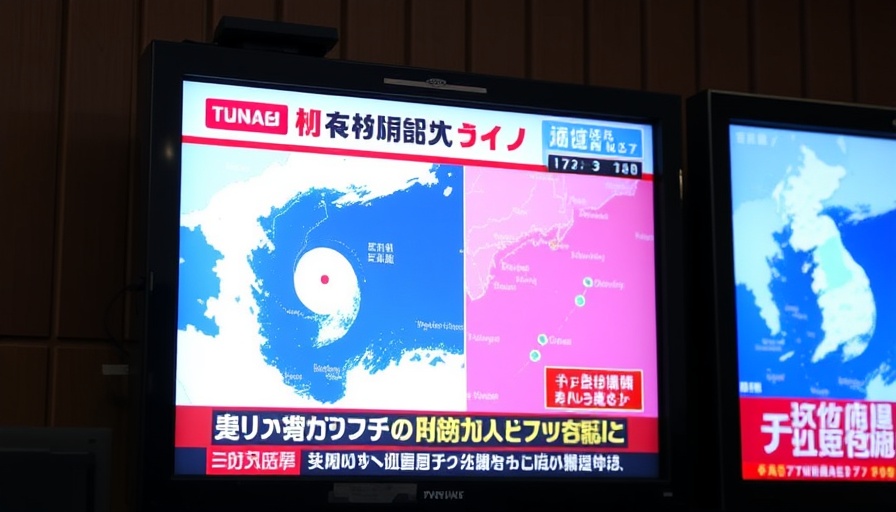
The Impact of the Recent 8.8-Magnitude Earthquake
On July 29, 2025, a powerful 8.8-magnitude earthquake struck the Kamchatka Peninsula in Russia, producing immediate tsunami warnings that rippled across the northern Pacific Ocean, affecting coastal communities from Japan to Hawaii and Alaska. This seismic event, recognized as one of the strongest in recent memory, is a somber reminder of the vulnerability that these regions face from natural disasters.
Understanding Tsunami Alerts
The Japan Meteorological Agency reported that the first tsunami wave, measuring about 30 centimeters, reached the eastern coast of Hokkaido shortly after the quake. Tsunami sirens echoed through towns, compelling residents to evacuate and seek higher ground. In Hawaii, preparations were also underway as the Pacific Tsunami Warning Center suggested that waves between 1 to 3 meters could impact the islands. This prompted local authorities to issue urgent advisories for people to protect lives and property.
Reflections on Preparedness and Response
This earthquake serves as a critical instance to evaluate existing infrastructure and emergency plans. In the wake of a similar devastating earthquake and tsunami in Japan in 2011, it is pivotal to assess how communities respond now. Local officials in Russia reported evacuations and efforts to manage the aftermath of the quake, showcasing the need for ongoing readiness in high-risk regions.
Historical Context of Earthquakes in the Area
The 8.8 magnitude quake is particularly alarming given its proximity to past seismic activities, notably the 9.0-magnitude earthquake that devastated Japan and caused meltdowns at the Fukushima nuclear plant. The frequency and intensity of seismic events in this specific region pose serious concerns for residents, necessitating continual monitoring and community education on disaster readiness.
Community Impacts and Human Stories
Witness accounts from affected regions describe chaos as people rushed to evacuate, illustrating how swiftly life can change in the face of natural disasters. In Petropavlovsk-Kamchatsky, thousands were reported to have fled their homes, with blurred memories of the earthquake's physical destruction merging with the emotional toll it takes on communities. These experiences underscore the critical need for psychological support and community resilience initiatives following such tragic events.
As we navigate the aftermath of this earthquake, let us remain aware of our vulnerability and produce actionable avenues for support and preparedness within our own communities. Understanding the gravity of these situations, fostering proactive measures, and staying informed can shape the resilience of our neighborhoods against potential threats.
 Add Row
Add Row  Add
Add 




Write A Comment